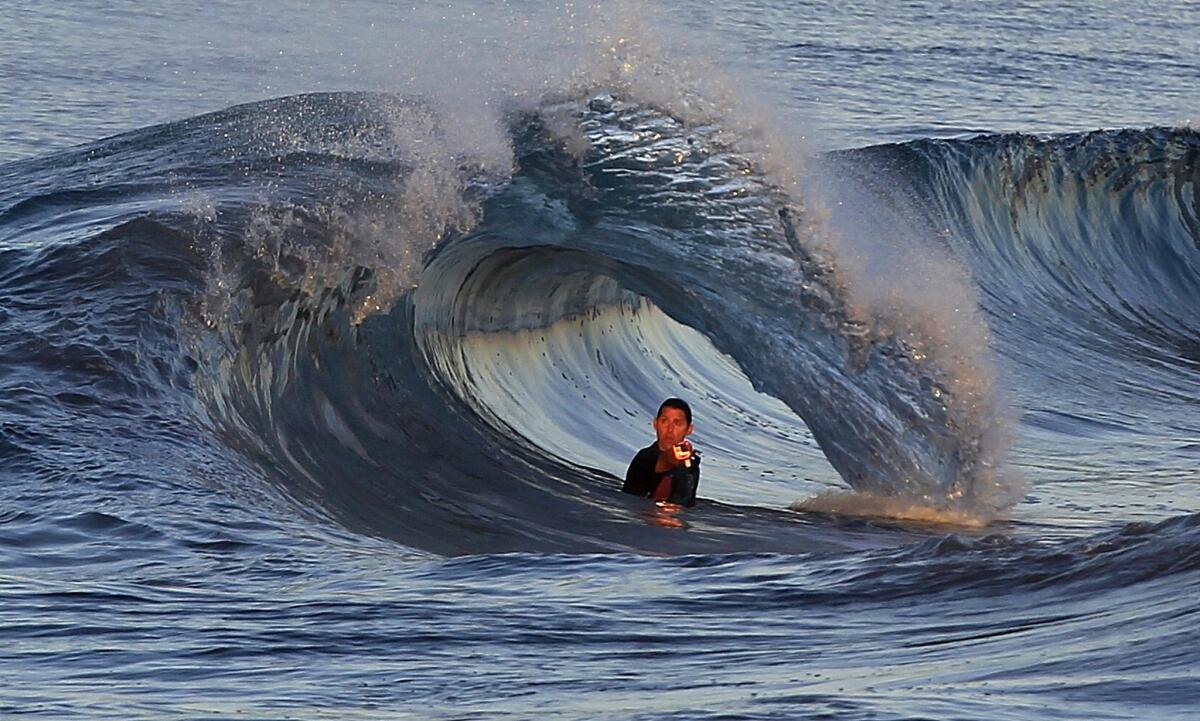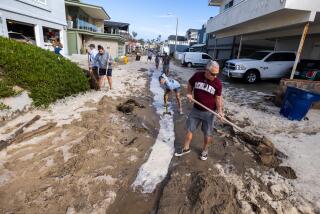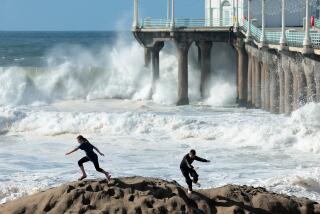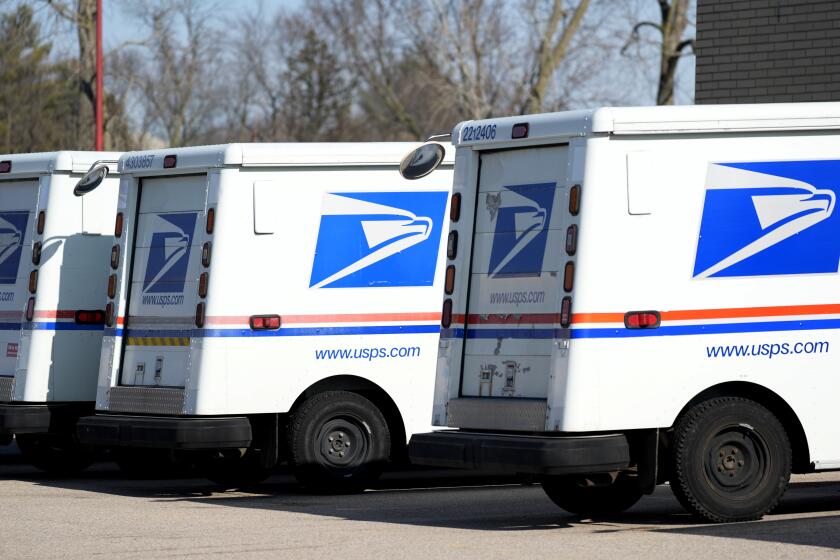Tsunami waves — well, ripples — strike Southern California

A swimmer photographs a wave at the Wedge in Newport Beach. The tidal rise from a tsunami caused by a quake off Chile amounted to a foot or so at Southern California beaches.
Before dawn broke across Southern California beaches, the anticipated tsunami waves from a massive 8.3 earthquake off the coast of Chile that rocked the South American country arrived.
Barely. In fact, almost imperceptibly.
The “tide fluctuations” conjured by the tsunami of up to a foot or so were not much to behold, and there were no reports of damage or flooding.
“Nothing,” Robin Duszynski, 54, said between sips of coffee as she paused while walking her dog in Seal Beach to see what was up with the chattered-about, impending tsunami.
Ventura County’s coastline saw a 13-inch surge, and the water off Santa Monica was lifted about 6 inches, the National Weather Service said.
In Seal Beach, the waves were projected to rise as much as 0.8 of a foot. The coastal town is no stranger to wintertime big waves and high tides, which can flood nearby apartment buildings, homes and alleys, locals said. Those events usually draw media attention and create buzz in the small beach town.
Early Thursday, some residents wondered whether there was still room for a surprise.
“Sometimes there’s a calm before the storm,” said Ginny Ferguson, a 60-year-old swim instructor. “But it’s as quiet as I’ve ever seen it. It’s like a lake.”
Darin Denos, a 48-year-old Seal Beach resident, works as a manager for a tugboat service company that operates in the Port of Long Beach. Since he has “floating assets” in the water and a home near the beach, he said he monitored the tsunami warning closely since Wednesday night.
He was even in touch with the mayor of Seal Beach and used binoculars to scope out the waters from his house. Denos said that any potential threat to the port and its cargo should be taken seriously.
“The people that are laughing are watching because they want to see something happen,” Denos said. “They pooh-pooh it, but if you think about that 1-foot swell and how far it traveled ... that’s a pretty significant force, if you ask me.”
Port of Los Angeles spokesman Phillip Sanfield said port employees were ready, having done overnight watches to make sure people were not in danger, but “fortunately, it was a non-event this morning.”
Mark Jackson, a meteorologist with the National Weather Service, said the danger posed by a significant tsunami is real, even if it doesn’t happen after a particular earthquake.
“Just because this one likely won’t produce much damage doesn’t mean we shouldn’t be paying attention,” he said.
In recent years, powerful earthquakes have struck other parts of the Pacific Rim, generating tsunamis that traveled thousands of miles to California.
A magnitude 8.8 earthquake rocked Chile on Feb. 27, 2010, with tsunami waves as high as 3 feet arriving in Santa Barbara and Santa Cruz, according to data compiled by the state Department of Conservation. Currents reached speeds of up to 15 knots, or about 17 mph, far above the 8-knot threshold needed to damage piers and harbors.
The next year, on March 11, 2011, a tsunami set boats loose and damaged 20 docks in Ventura Harbor after a deadly earthquake off the northeastern coast of Japan. Shelter Island in San Diego also reported significant damage.
That tsunami brought 6- to 8-foot surges that flooded beaches and harbors, splintering docks, crushing scores of boats and triggering the evacuation of residents near the shore. One person died, and marinas and harbors up and down the coast saw extensive damage.
Times staff writer Joseph Serna contributed to this report.
More to Read
Start your day right
Sign up for Essential California for news, features and recommendations from the L.A. Times and beyond in your inbox six days a week.
You may occasionally receive promotional content from the Los Angeles Times.







